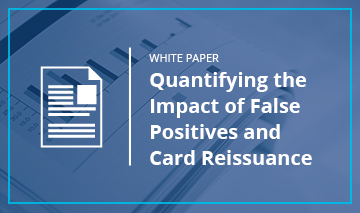 In a recent post, we looked at who is primarily at fault when it comes to a data breach – customers or financial institutions? As we found out, the majority of respondents reported they think the responsibility of protecting and securing customer data lies with the companies – not themselves.
In a recent post, we looked at who is primarily at fault when it comes to a data breach – customers or financial institutions? As we found out, the majority of respondents reported they think the responsibility of protecting and securing customer data lies with the companies – not themselves.
If consumers are blaming organizations for breaches, what are the repercussions for financial institutions? A new report by Carnegie Mellon looks at the correlation between the impact of a fraud incident and customer loyalty and what is at stake when it comes to a data breach.
High Stakes
According to the data, which came from 500,000 customer records over a span of five years, the repercussions following a breach are steep. Following a fraud incident, researchers have shown that firms’ stock price suffers. While usually this is short-term and the stock rebounds, it shows consumers’ immediate loss of trust and the sudden impact a breach can have on a company as a whole.
Trust is key when it comes to customer loyalty. Being a fraud victim obviously affects a customers’ perception around their banks security measures. So much so that many customers said that would leave their bank if they found unauthorized charges, or random debits to their account, even if they were quickly refunded for any losses. The report found that a user is three percentage points more likely to transfer their accounts and money to a different institution within six months of a security lapse.
Another interesting point to emerge from the findings shows that the bank’s ability to detect the source of the breach will affect the consumers’ perception and impact their overall loyalty to the bank. In a nutshell, this is about transparency and being able to clearly identify and explain the root of the problem, why it happened, who caused it, and what is being done to prevent similar attacks. If fraudulent events can’t be properly accounted for- and explained – customers are more likely to churn as their fear of similar future incidents increases. Uncertainty plays an important part in reducing customer trust.
The Greater the Loss, the Higher the Cost
When it comes to churn rates, in addition to a financial institutions ability to attribute the loss, the level of impact inflicted on a customer is also a big factor when it comes to customer loyalty. The data shows that the average loss was around $125.00. The trigger point was $500.00 meaning that customers who lost more than this amount were more likely to leave their bank.
Even though all users were compensated for their losses, the results still suggest that even when a bank is not directly responsible for a fraudulent transaction, users still hold their bank accountable and may terminate the relationship.
It is safe to say that data breaches impact both customers and financial institutions alike. As fraud schemes continue to grow in scale, it is increasingly important that banks have security measures in place to mitigate risk and reduce churn rates in order to build trust and customer loyalty.
Learn more about the impact of disturbances on customer retention with our latest white paper:


